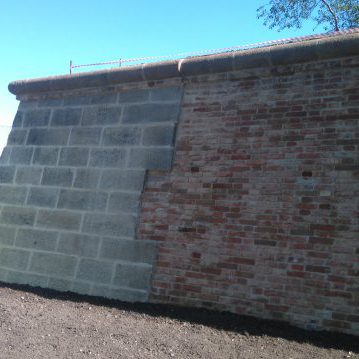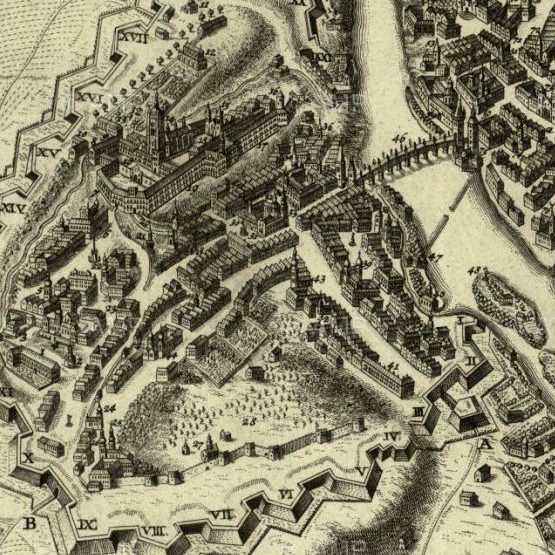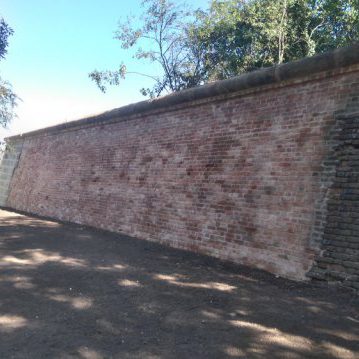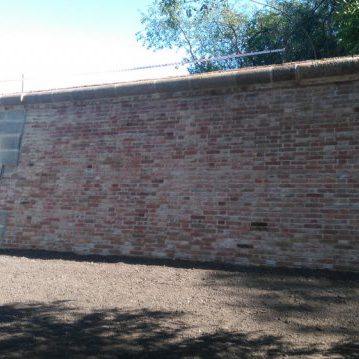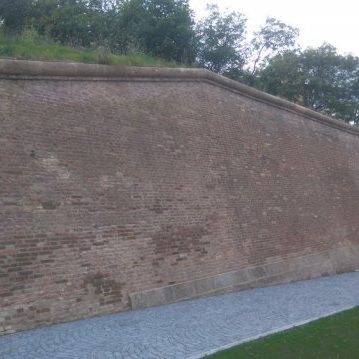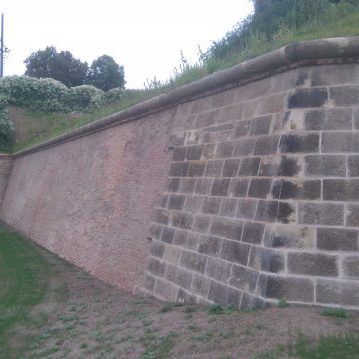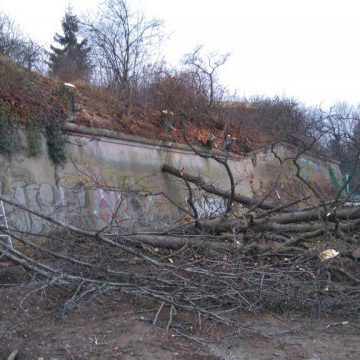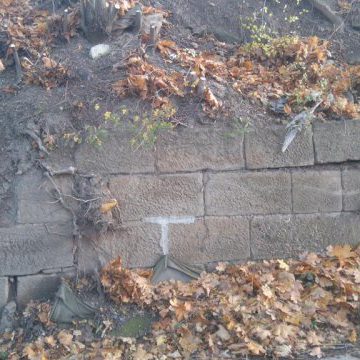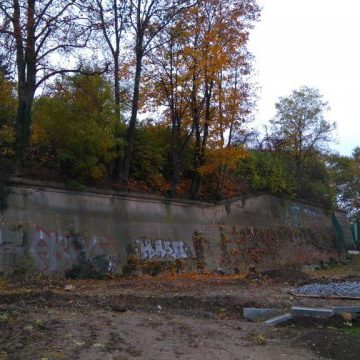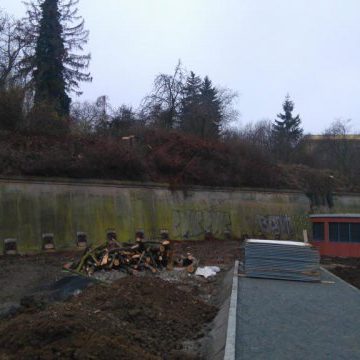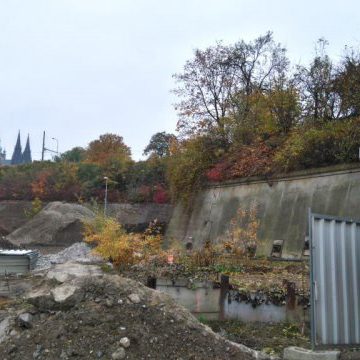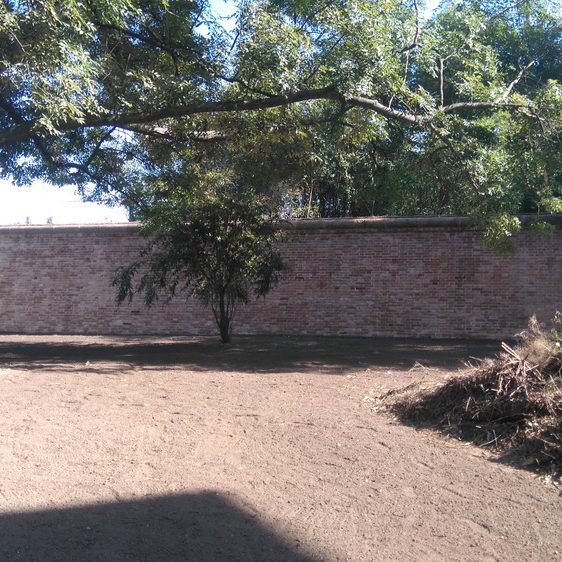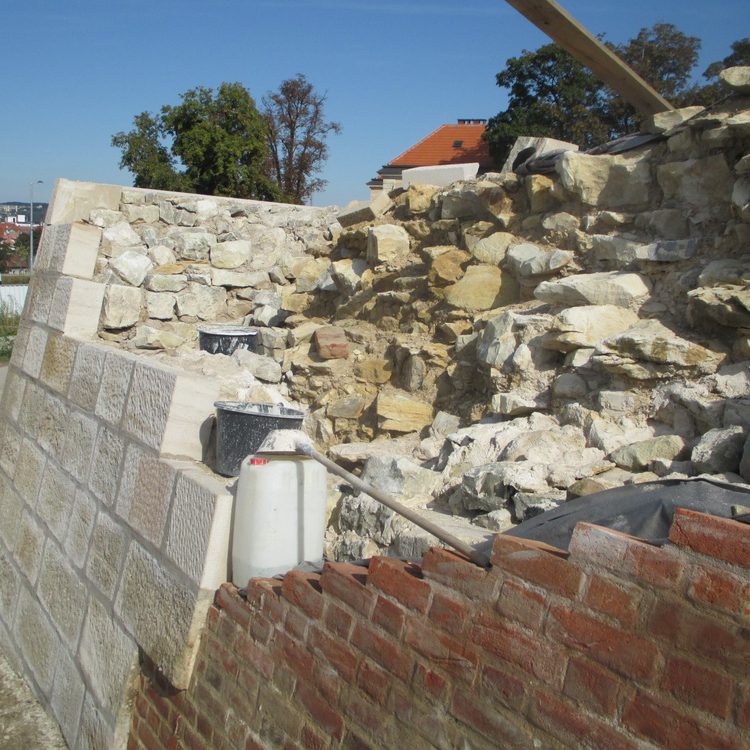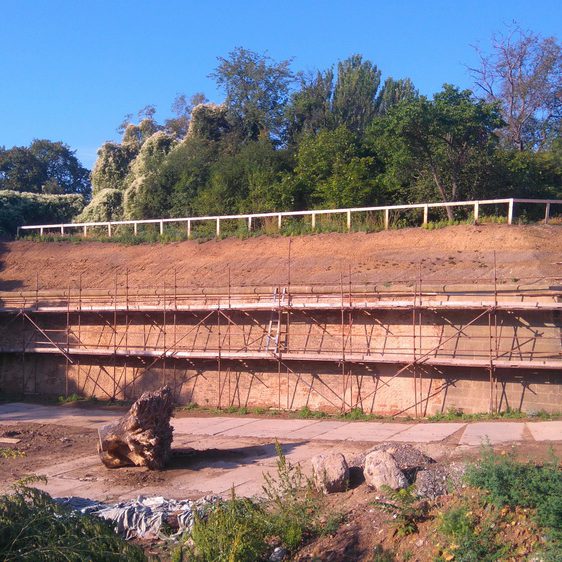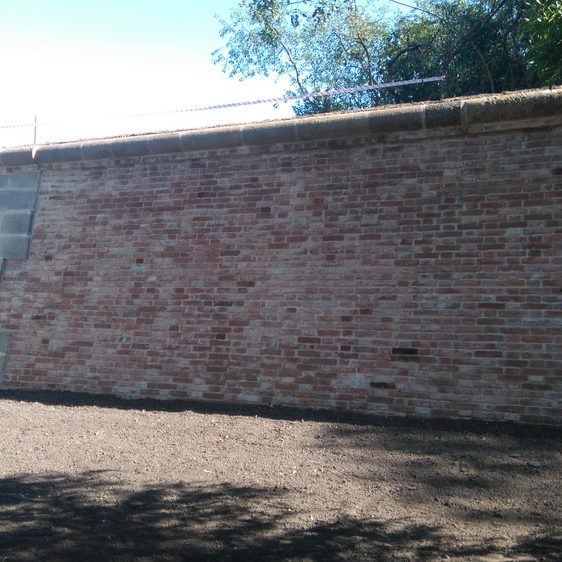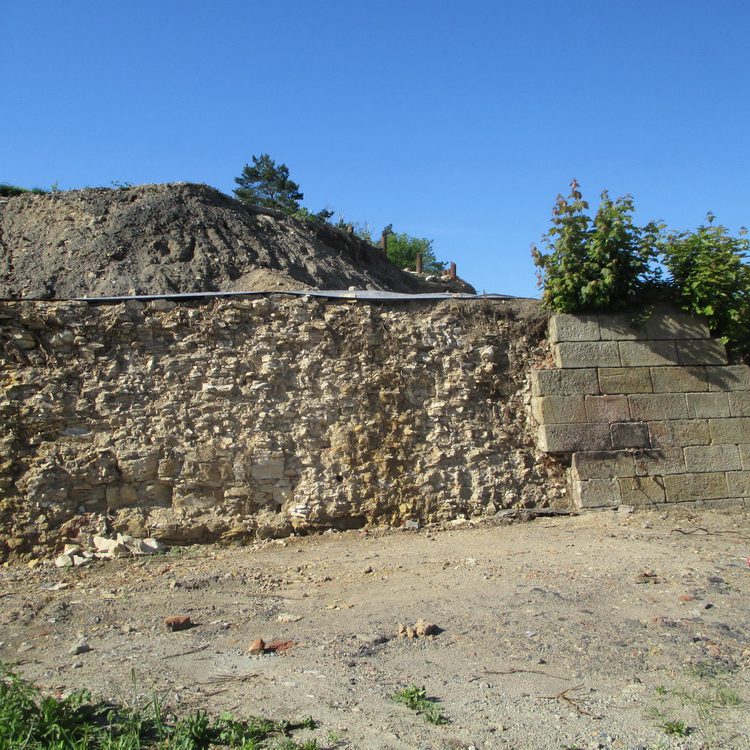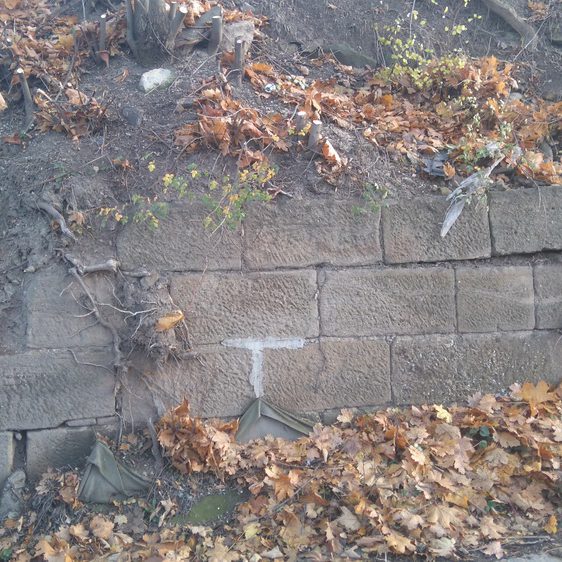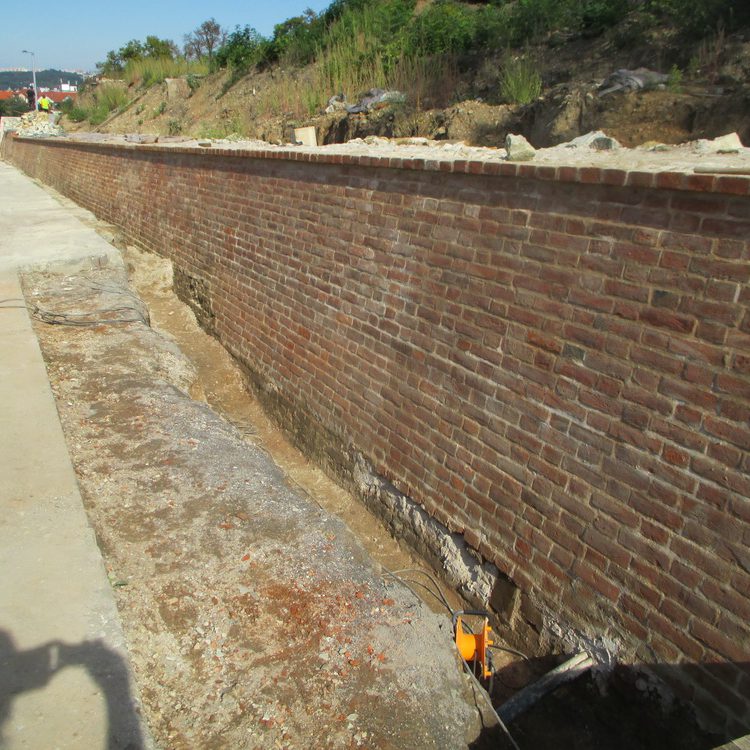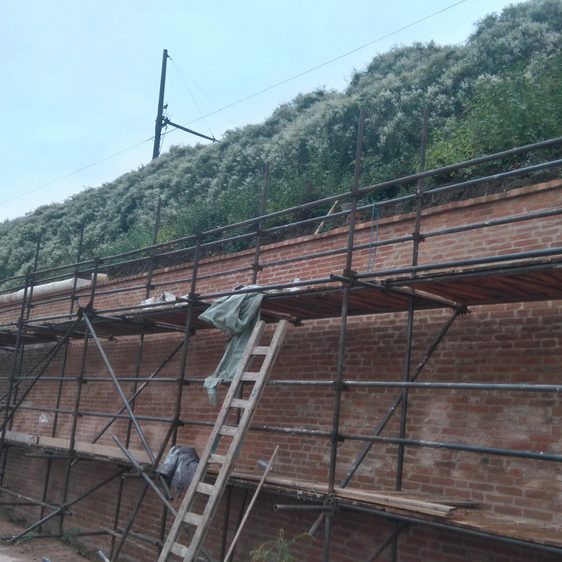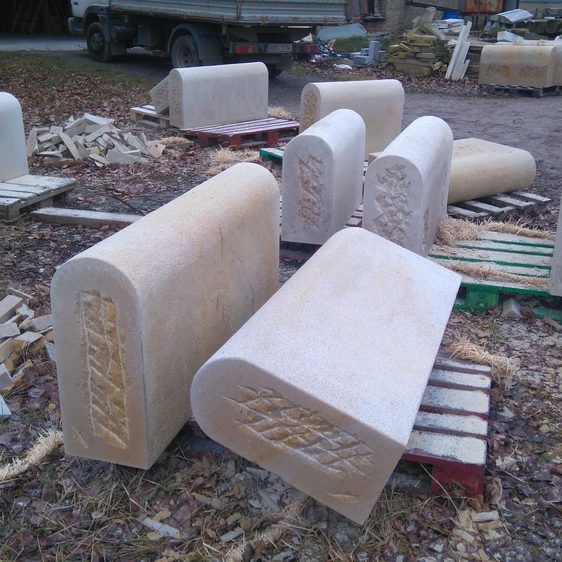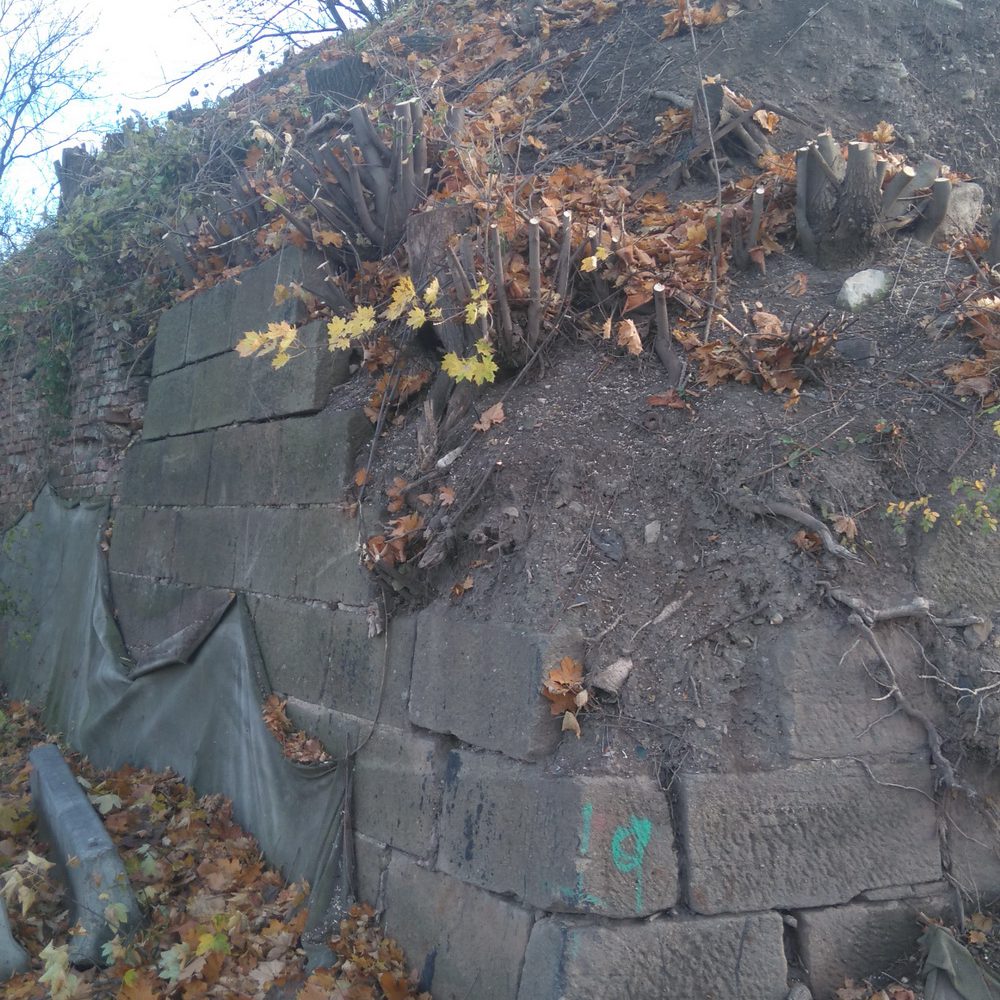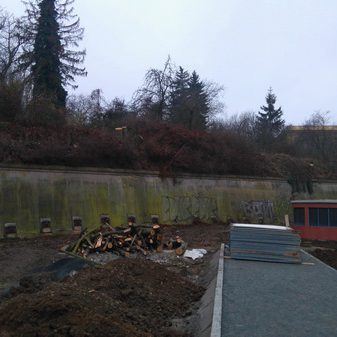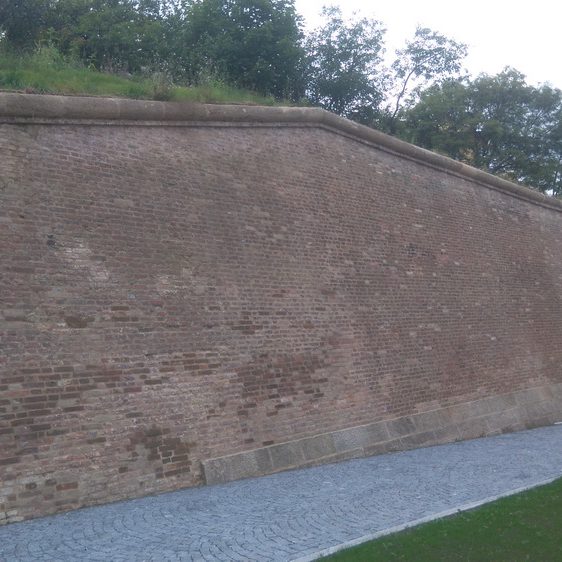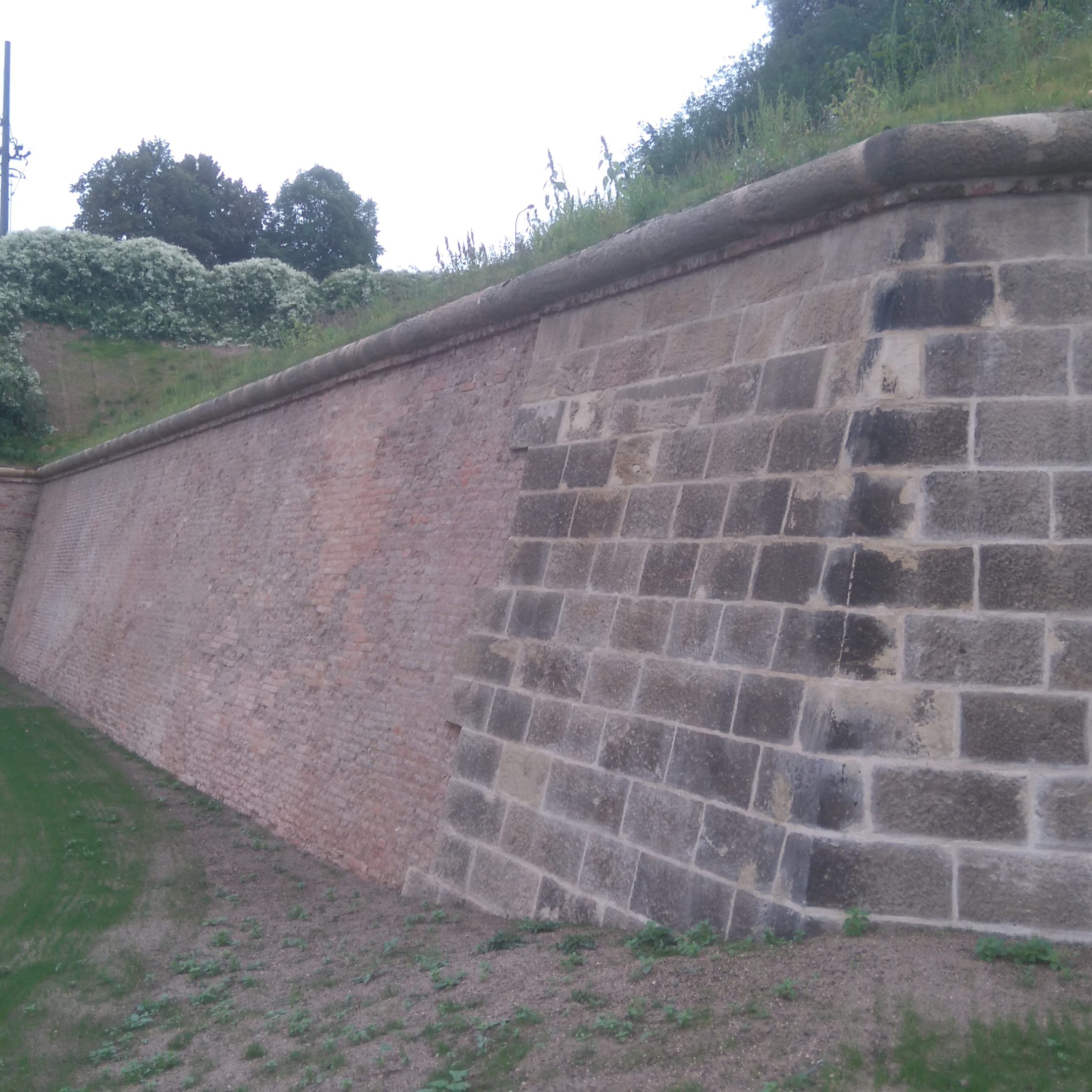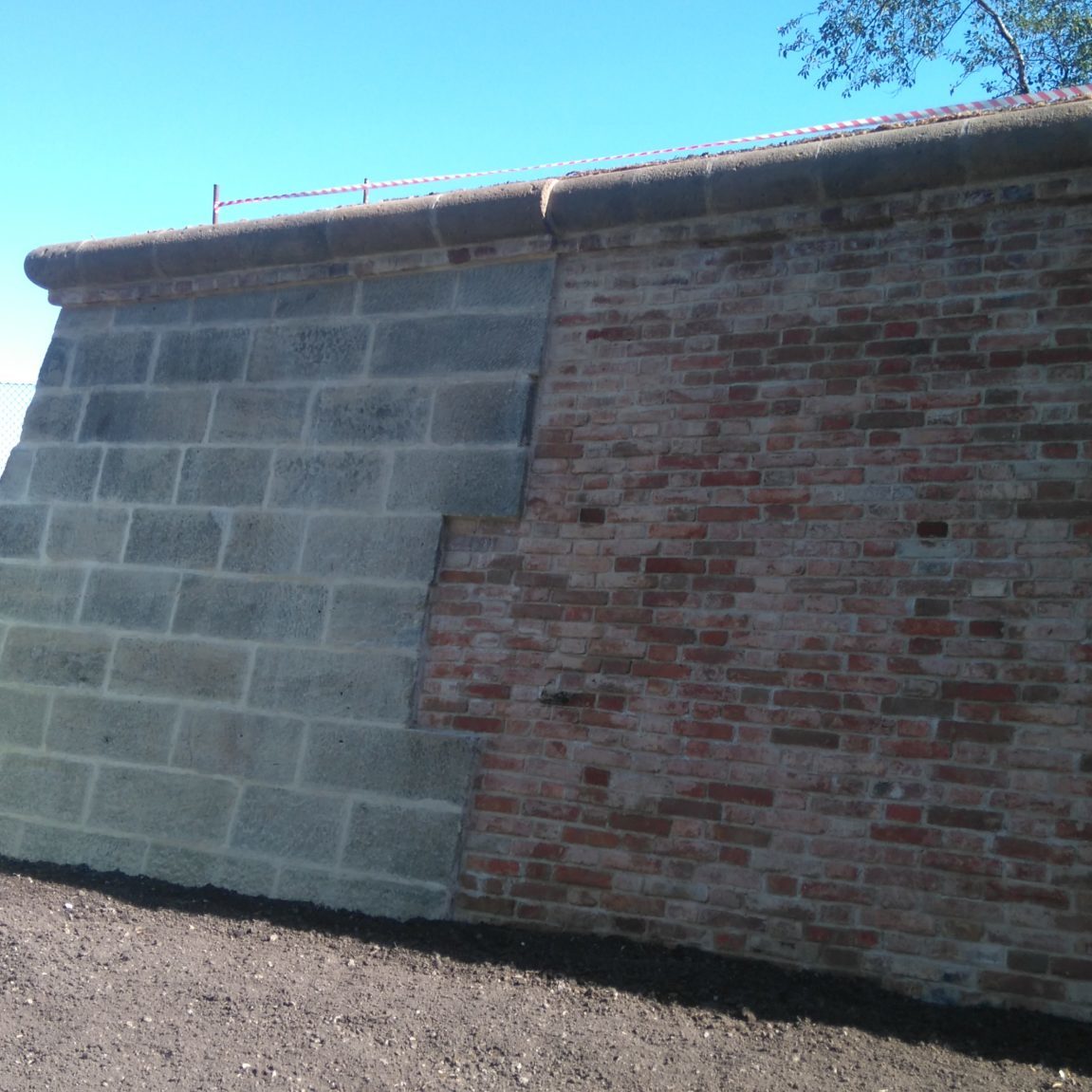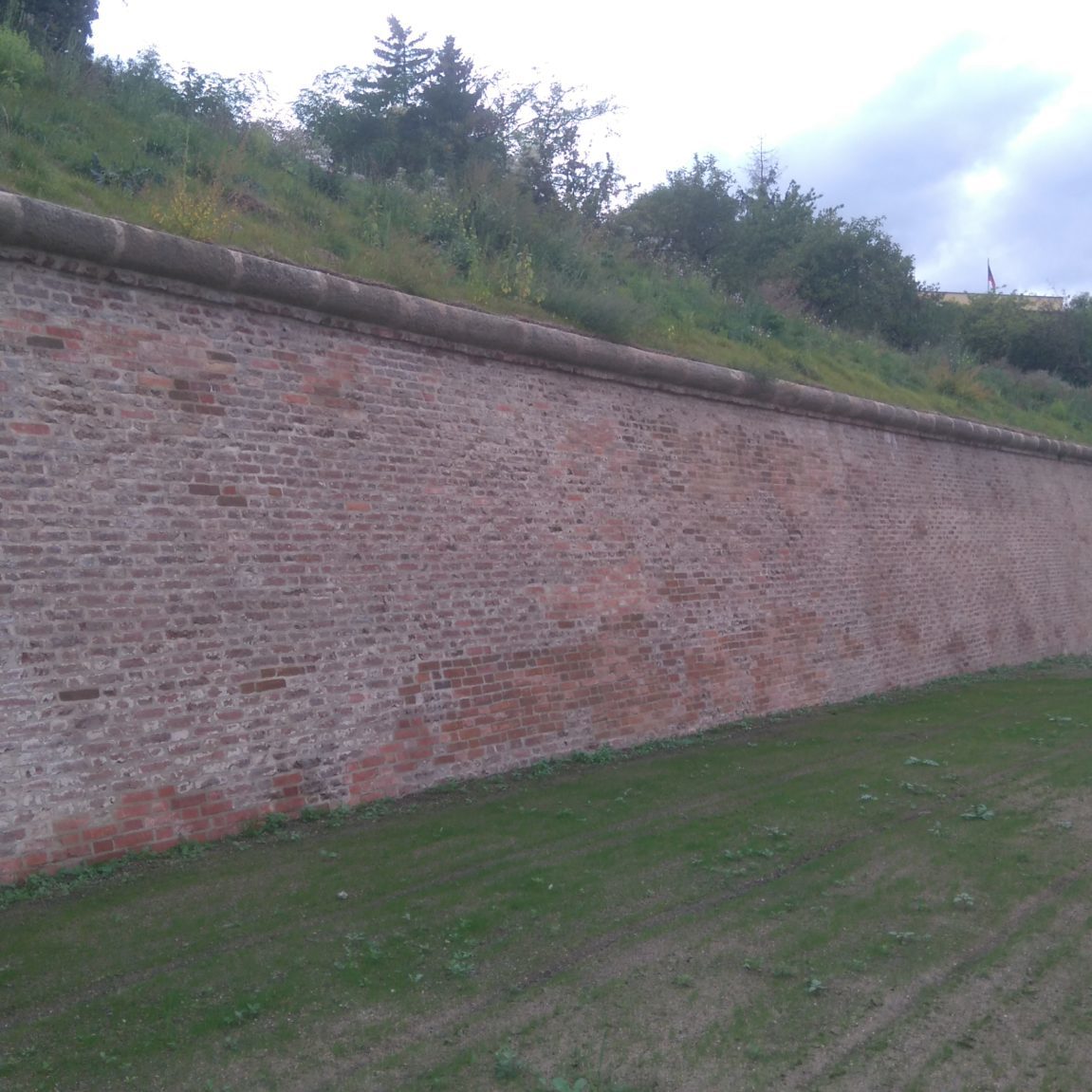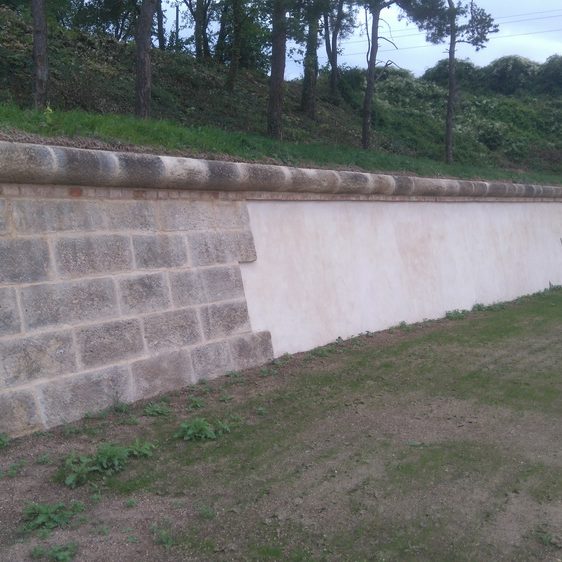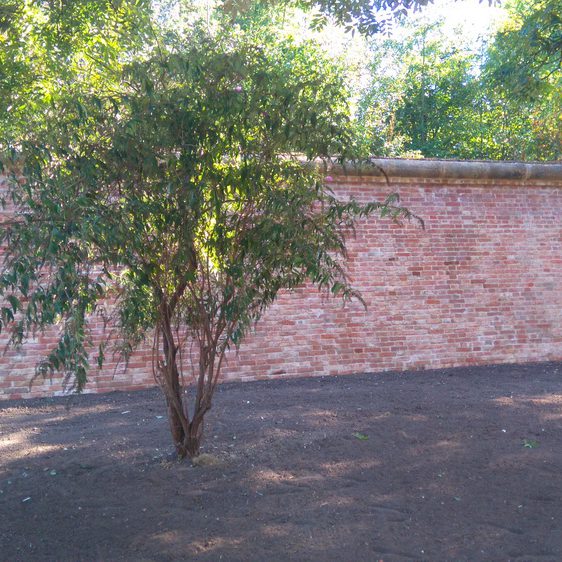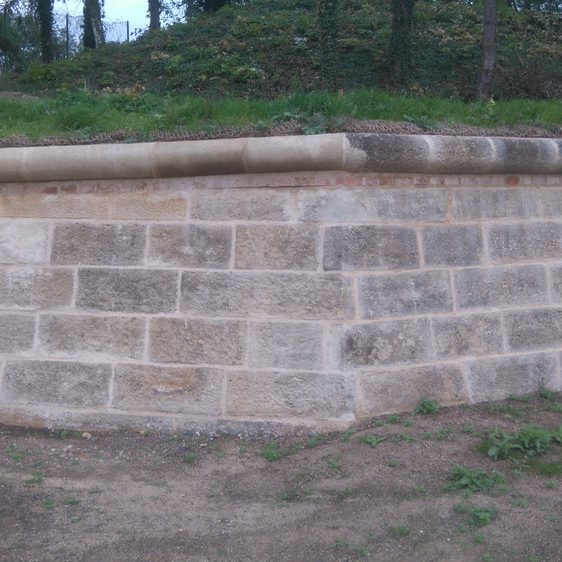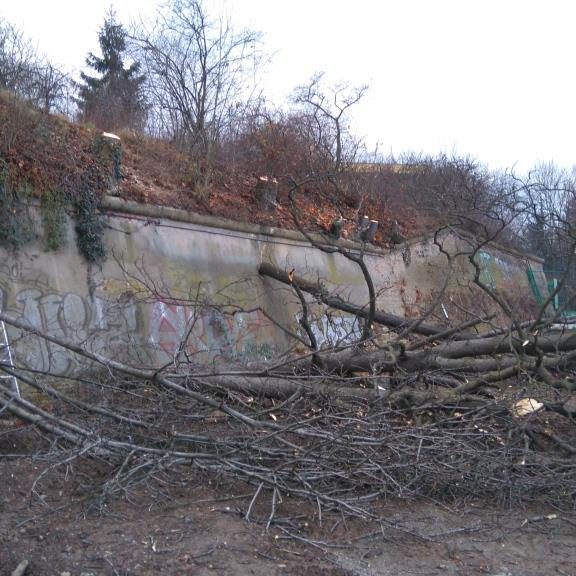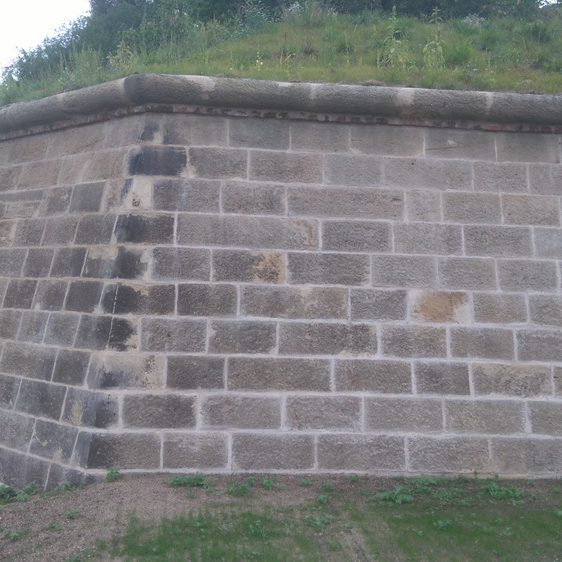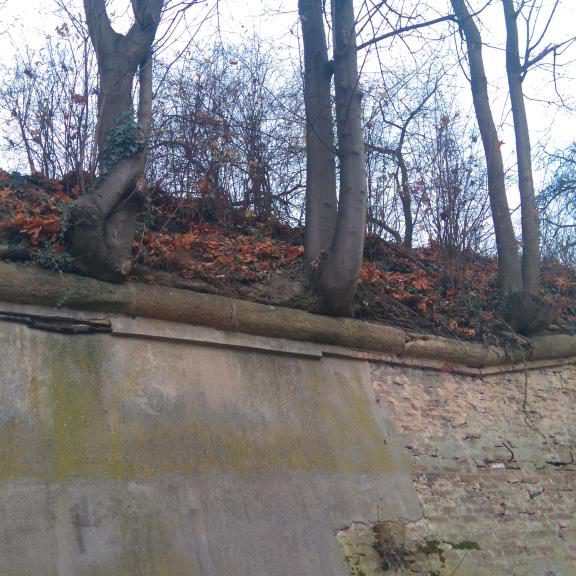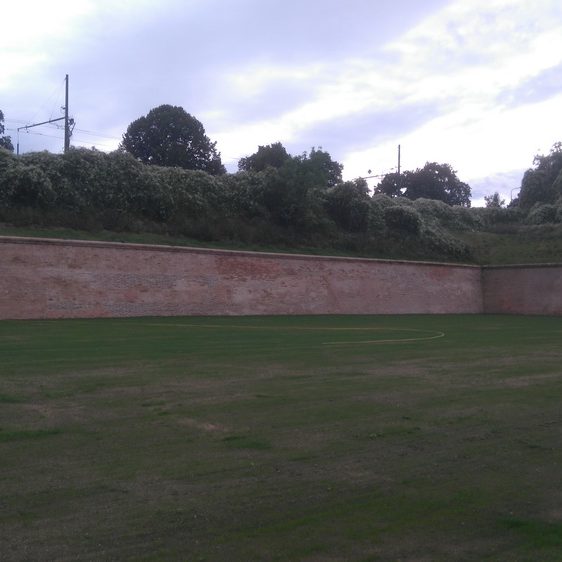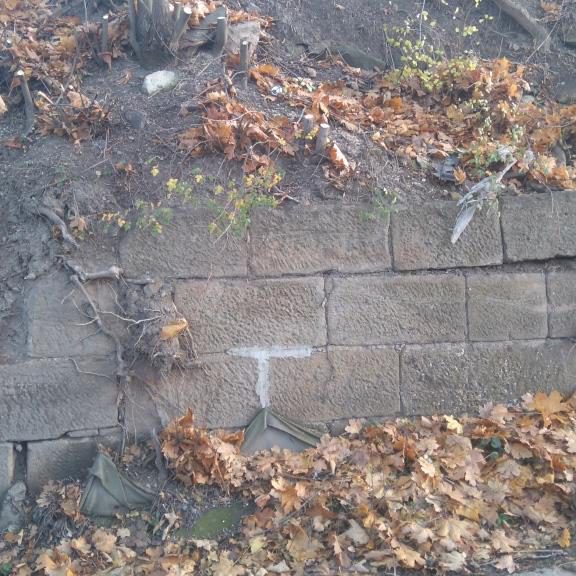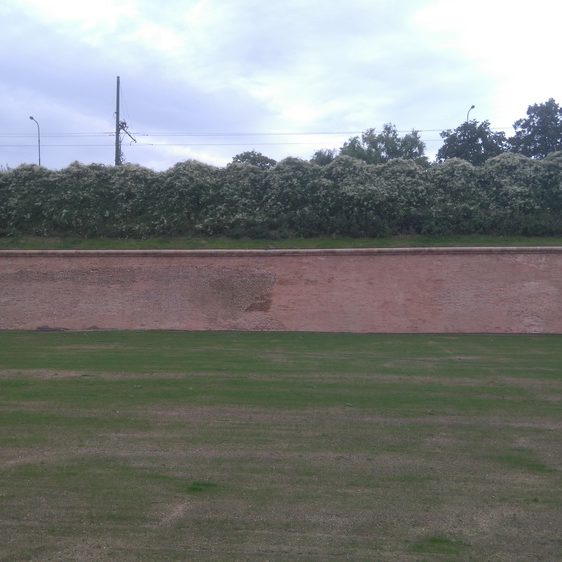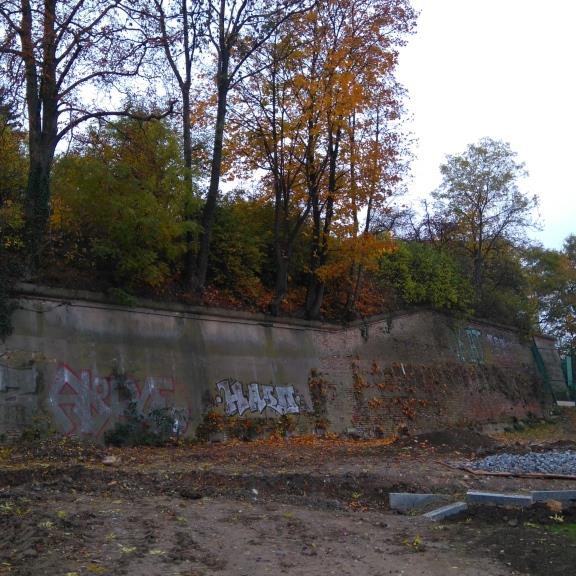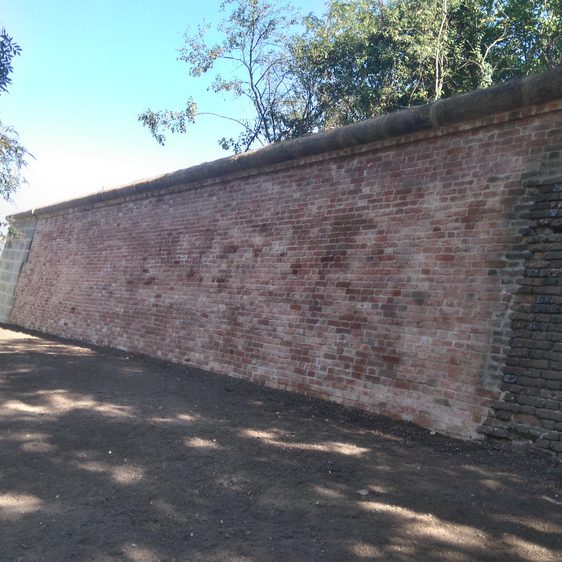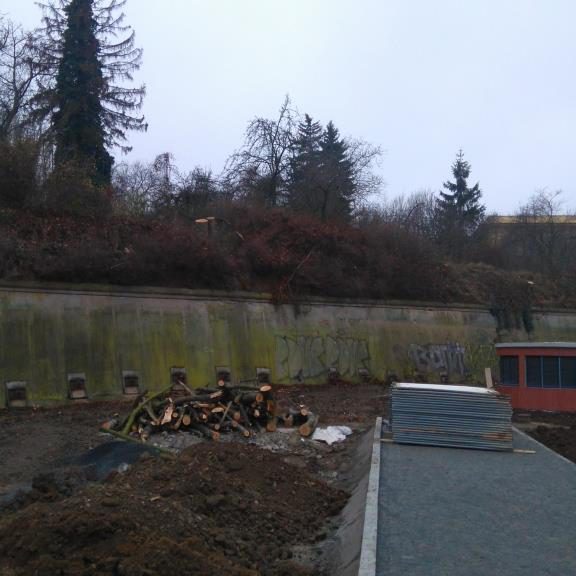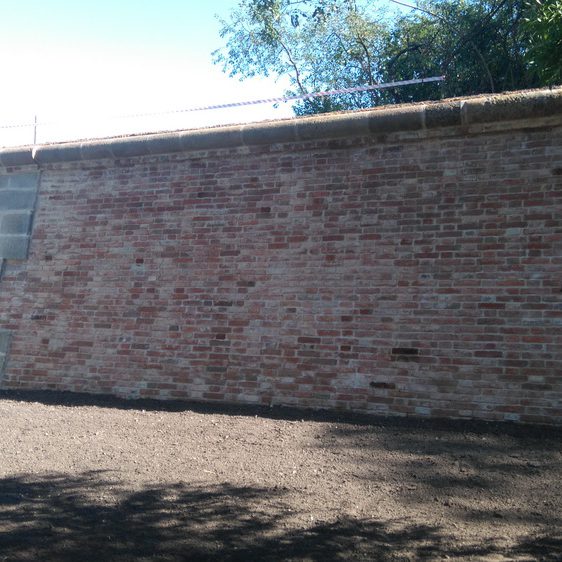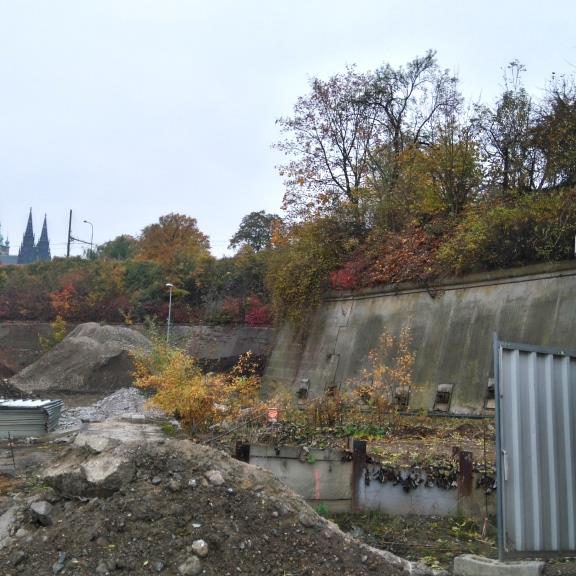Securing Baroque curtain walls (bastions) at project 9515 Myslbekova – Prašný most, Prague

| Address: | Building plot 9515 Myslbekova – Prašný most |
|---|---|
| Description of work: | Ground and foundations works
Vertical and complete structures Stone and masonry works Restoration treatment of stone and brick walls |
| Investor: | Metrostav a.s. |
| Contractor: | GEMA ART GROUP a.s. |
| Implementation: | 03/2015-6/2017 |
GEMA ART GROUP a.s. is carrying out preservation and restoration works in securing Baroque curtain walls above the Blanka tunnel entrance in the section Myslbekova – Prašný most, in Prague 6. The works were initiated after the completion and opening of the tunnel for the public.
The Baroque curtain walls were constructed between 1653 – 1730 when Prague was remade into a Baroque fortress with a citadel located in Vyšehrad. Neglected city walls around Prague were reconstructed and the old Gothic walls remained in place only in certain sections. The fortifications were reinforced with bastions. The Baroque “Marian” walls (named after the small Virgin Mary Church near the Písecká Gate) led from the Prašný Bridge over across Pohořelec and Petřín towards the Vltava river, and on the other side towards Letná (at the so-called Letná profile). Of the fortress entrance gates, only the Písecká (also called Bruská) Gate has been preserved to the present day. The decision to get rid of the city walls was adopted in 1860. In 1898, walls to the west of Písecká Gate had been demolished and a Cadet School (nowadays the Ministry of Defence) building was constructed in their place in the year 1900. The eastern part was gradually removed after 1901.
The works opened with a careful removal of bushes and self-seeded trees. Brick and stone walls of the bastions were breached in many places by the root system of now fully-grown trees. The securing of the Baroque bastions were included extensive ground works, excavations, removal of old anchors, boreholes and injections, insulation against earth dampness, gradual disassembly of degraded parts and adding substitute stones or bricks into the walls. Final works were involved mounting stone toruses to the top of the walls, applying lime plasters and treatment against air and climatic humidity.
The construction project was completed in June 2017. The project was completed within the planned deadline; the entire park complex will be opened when the public grounds are completed. The reconstructed masonry was handed over to the client free of defects and backlogs. Representatives of the National Heritage Institute evaluated the construction project as “exemplary” in terms of further reconstructions of the Baroque fortifications around Prague city centre.



